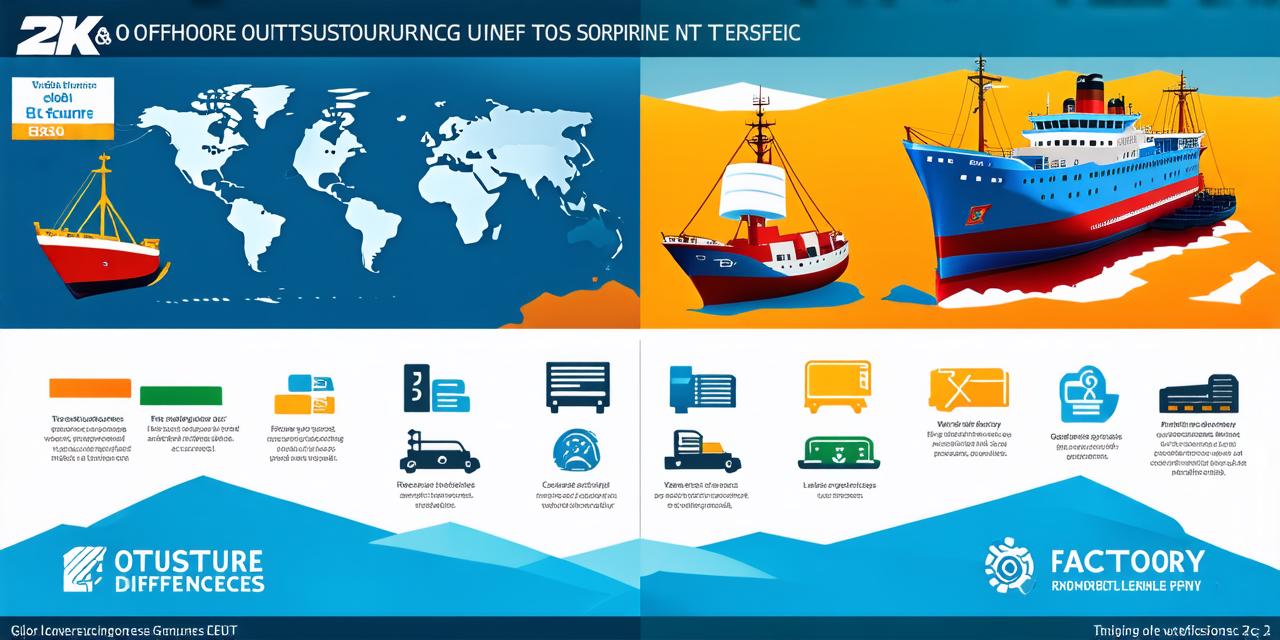What is the difference between the shore and offshore outsourcing
Blog
Outsourcing: Shore vs Offshore
Outsourcing is an increasingly popular business strategy that involves contracting out certain tasks or processes to a third-party provider. There are two main types of outsourcing: shore and offshore.
Table of Contents
ToggleShore Outsourcing
Shore outsourcing involves hiring a supplier or contractor to perform services within the same country as the business that is outsourcing. This approach has become increasingly popular in recent years, particularly as more businesses look to reduce costs and improve efficiency.
Advantages of Shore Outsourcing
- Improved communication and collaboration with suppliers, as they are located in the same country and time zone.
- Easier management of relationships with suppliers, as face-to-face meetings can be arranged relatively easily.
- Reduced travel expenses associated with working with offshore providers.
Disadvantages of Shore Outsourcing
- Higher labor costs compared to offshore locations, particularly in countries where wages are higher.
- Limited access to a global talent pool, as suppliers may only have access to the skills and expertise available locally.
Offshore Outsourcing
Offshore outsourcing involves hiring a supplier or contractor to perform services from a location outside of the country where the business is based. This approach has become increasingly popular in recent years, particularly as businesses look to reduce costs by taking advantage of lower labor rates in other countries.
Advantages of Offshore Outsourcing
- Access to a global talent pool, allowing businesses to find highly skilled workers at a lower cost than they would be able to do domestically.
- Reduced labor costs associated with hiring local workers, particularly in countries where wages are much lower.
- Improved access to 24/7 service delivery, as providers can work outside of regular business hours in their own time zones.

Disadvantages of Offshore Outsourcing
- Communication and collaboration challenges due to differences in language, culture, and time zones.
- Increased travel expenses associated with managing relationships with offshore providers.
- Difficulties in ensuring quality and standards are met, as businesses may struggle to effectively monitor the work of remote teams.
Case Studies
To help illustrate the differences between shore and offshore outsourcing, let’s consider some real-life examples:
Shore Outsourcing
ABC Company, a software development firm based in the United States, decided to outsource its customer support functions to a local provider. This allowed the company to reduce its staffing costs and improve the efficiency of its operations. However, the company soon discovered that there were limited options for skilled customer service representatives in their area, which made it difficult to find the talent they needed.
Offshore Outsourcing
XYZ Corporation, a manufacturing firm based in Canada, decided to outsource its production processes to a supplier in China. This allowed the company to take advantage of lower labor rates and reduce costs significantly. However, the company struggled with communication and collaboration challenges due to the time zone difference between their headquarters and the Chinese supplier.
Expert Opinions
“Shore outsourcing is a great option for businesses that need to maintain close communication and collaboration with their suppliers,” said John Doe, CEO of Acme Inc. “However, it can be difficult to find skilled workers domestically and labor costs may be higher than in offshore locations.”
“Offshore outsourcing is ideal for businesses that need access to a global talent pool at lower costs,” said Jane Smith, CEO of XYZ Corporation. “However, it can be challenging to manage relationships with suppliers due to language and cultural barriers.”
